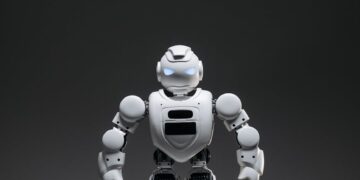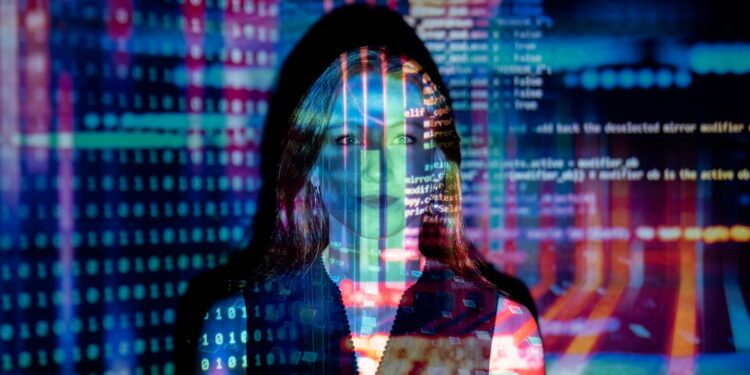The conversation around artificial intelligence has swiftly evolved, moving far beyond its initial perception as merely a collection of sophisticated tools for specific tasks. Today, generative AI stands recognized as a fundamental engine, actively reshaping the very essence of human endeavor across an unprecedented spectrum. It is no longer just about automation or efficiency; it is fundamentally altering creativity, powering new levels of productivity, and profoundly redesigning our most basic interactions with digital experiences. This profound technological shift demands a critical re-evaluation of what is possible, compelling us to look beyond mere algorithmic advancements and thoughtfully reconsider the true boundaries of human potential in a future increasingly intertwined with intelligent systems. This article explores how generative AI is driving this transformation.
The seismic shift: generative AI as an engine, not just a tool
For years, AI’s prowess was largely understood through its analytical and predictive capabilities. It could process vast datasets, identify patterns, and automate repetitive tasks with incredible efficiency. However, generative AI marks a qualitative leap, distinguishing itself as a truly foundational engine rather than merely another advanced tool in the digital toolkit. Its essence lies not in analysis, but in creation. Unlike previous AI iterations that might classify images or recommend products, generative models can conjure entirely new ones—be it photorealistic images, compelling narratives, intricate musical compositions, or functional code—from abstract prompts or existing data. This capacity for original output, for synthesizing novel solutions and content that didn’t previously exist, is what transforms it from a utility into a dynamic, creative force. It processes complex patterns within its training data to generate fresh, contextually relevant, and often surprising results, effectively giving it a creative spark that fundamentally redefines the human-computer relationship. This distinction is crucial for understanding its transformative impact.
Redefining creativity and innovation
The advent of generative AI has ushered in an exhilarating era for creative endeavors, fundamentally redefining the boundaries of artistic expression and innovation. Far from replacing human ingenuity, these systems act as powerful co-creators and accelerators, enabling artists, writers, musicians, and designers to explore previously unimaginable avenues. Imagine a graphic designer who can generate hundreds of logo variations in minutes, or a novelist who can brainstorm plot twists and character dialogues with an intelligent assistant. Generative AI excels at rapid ideation, style transfer, and the synthesis of complex elements, dramatically reducing the time spent on mundane tasks and allowing creators to focus on the higher-level conceptual and emotional aspects of their work. It provides a fertile ground for experimentation, helping to overcome creative blocks and fostering an environment where novel ideas can flourish with unprecedented speed and scale. This partnership amplifies human potential, transforming the creative process into a dynamic collaboration.
To illustrate its diverse applications in this domain, consider the following examples:
| Creative field | Generative AI application | Outcome for human creators |
|---|---|---|
| Visual arts and design | Image generation, style transfer, 3D model creation | Rapid prototyping, new artistic styles, overcoming creative blocks, accessibility to complex tools |
| Writing and content creation | Text generation, summarization, poetic structures | Drafting assistance, brainstorming, personalized content at scale, breaking writer’s block |
| Music and audio production | Composition, sound design, vocal synthesis | Exploration of new harmonies, automated backing tracks, personalized soundscapes |
| Software development | Code generation, bug detection, automated testing | Faster development cycles, reduced boilerplate code, enhanced debugging capabilities |
Supercharging productivity across industries
Beyond its creative applications, generative AI is proving to be an indispensable asset for significantly boosting productivity across virtually every industry sector. In the corporate world, it automates the creation of reports, marketing copy, and internal communications, freeing up valuable human capital for more strategic tasks. Customer service benefits immensely from AI-generated personalized responses and automated query resolution, leading to enhanced user experiences and operational efficiency. Developers are leveraging generative AI for code completion, bug fixing, and even generating entire software modules, dramatically accelerating development cycles. Research and development teams can synthesize complex scientific papers, generate hypotheses, and design experiments more rapidly. The ability to churn out high-quality, contextually relevant content and solutions at an unprecedented scale means businesses can respond faster to market demands, personalize offerings for individual customers, and streamline internal operations like never before. This isn’t just about incremental improvements; it’s about redefining the very pace and scope of work, enabling organizations to achieve more with greater accuracy and less manual effort.
The evolving human-digital frontier and rethinking potential
As generative AI becomes deeply embedded in our digital experiences—from personalized content feeds to interactive virtual environments—it fundamentally alters the human-digital frontier. Our interaction is becoming less about explicit commands and more about a seamless, intuitive dialogue with intelligent systems that anticipate needs and co-create solutions. This paradigm shift compels a profound re-evaluation of human potential. Traditional roles requiring repetitive, predictable tasks are being redefined, necessitating a focus on uniquely human skills: critical thinking, emotional intelligence, complex problem-solving, and ethical judgment. Education systems must adapt to foster these competencies, preparing individuals for a future where collaboration with AI is standard. The true power lies in the symbiosis: humans provide the vision, context, and moral compass, while AI offers unparalleled processing, generation, and scaling capabilities. Rethinking human potential means understanding that our future lies not in competing with AI, but in leveraging its generative power to amplify our own, pushing the boundaries of what humanity can achieve when empowered by intelligent partners.
In summation, generative AI has unequivocally transcended its initial categorization as a mere collection of advanced tools. It has emerged as a pervasive, fundamental engine, actively instigating profound shifts across the domains of creativity, productivity, and our digital interactions. We’ve explored how it empowers novel forms of artistic expression and accelerates innovation, simultaneously streamlining complex workflows and personalizing user experiences at scale. This technological revolution isn’t simply about doing things faster; it’s about doing fundamentally new things, pushing the envelope of what’s achievable by human and machine collaboration. Embracing this new paradigm requires us to not only adapt our skills but also reimagine the core definition of human potential. The future will belong to those who master the art of co-creation with these intelligent systems, leveraging their capabilities to unlock unprecedented levels of human achievement and innovation.



















